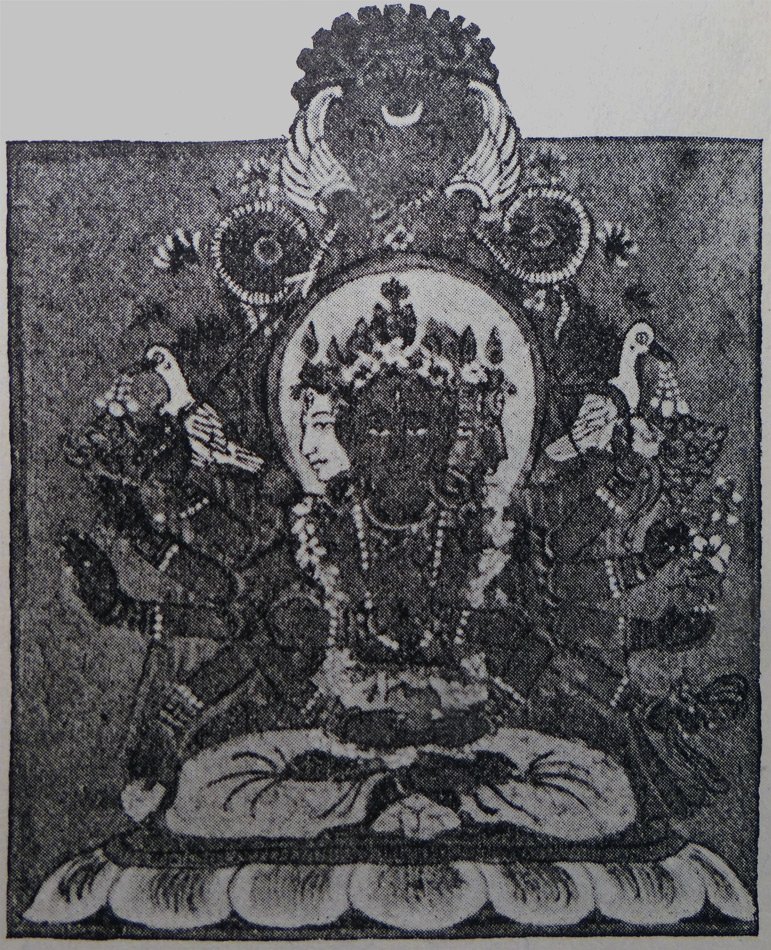The Indian Buddhist Iconography
by Benoytosh Bhattachacharyya | 1958 | 51,392 words | ISBN-10: 8173053138 | ISBN-13: 9788173053139
This page contains an iconography image of Five Protectresses (3): Mahamantranusarini and represents figure 198 of the book Indian Buddhist Iconography, based on extracts of the Sadhanamala English translation. These plates and illustrations represent either photographs of sculptures or line-drawing reproductions of paintings or other representations of Buddhist artwork.
Figure 198 - Five Protectresses (3): Mahāmantrānusāriṇī

Fig. 198: Mahāmantrānusāriṇī
Introduction: The five protectresses [viz., Mahāmantrānusāriṇī] or the Rakṣā deities as they are called in Tantric works, are popular and well-known amongst the Mahāyāna Buddhists, particularly of Nepal. A manuscript copy of the Pañcarakṣā describing the five Rakṣā deities, their worship on different occasions and their powers, is to be found in almost every Buddhist household in Nepal. [...] The reason why the five Rakṣā deities are popular is to be found in the Sādhanamālā. According to this authority the five Rakṣā deities [viz., Mahāmantrānusāriṇī], when worshipped, grant long life. They protect kingdoms, villages and meadows. They protect men from evil spirits, diseases and famines, and from all possible dangers that may befall mankind. [...] All the five deities are worshipped either singly or collectively in a Maṇḍala.
3. Mahāmantrānusāriṇī:
Colour: blue;
Faces: three;
Arms: twelve;
Symbol: vajra.
The form of this third Rakṣā deity is described in the Niṣpannayogāvalī in the following words:
“In the South on the orb of the sun over a double lotus there is Mahāmantrānusāriṇī with the halo of the sun. She sits in the Vajraparyaṅka attitude and is blue in colour Her principal face is blue, the right is white and the left is red. She is twelve-armed. With one pair of hands she displays the 2. Dharmācakra-mudrā. With another pair of hands she exhibits the 4. Samādhi-mudrā. In the remaining four right hands she shows 5. the Vajra, 6. the arrow, 7. the Varada and 8, the Abhaya mudrās. The remaining four left hands exhibit 9. the Tarjanī with the noose, 10. the bow, 11 the jewel and 12. the jar marked with a lotus”.
Like the other deities of the Pañcarakṣā group Mahāmantrānusāriṇī is also widely represented. She was probably known in China under the title of Mantrānudhāriṇī. Fig. 198 illustrates a miniature of the goddess in the collection of Dr. Evans Wentz. Here as well as in the Sādhanamālā the goddess is twelve-armed.
